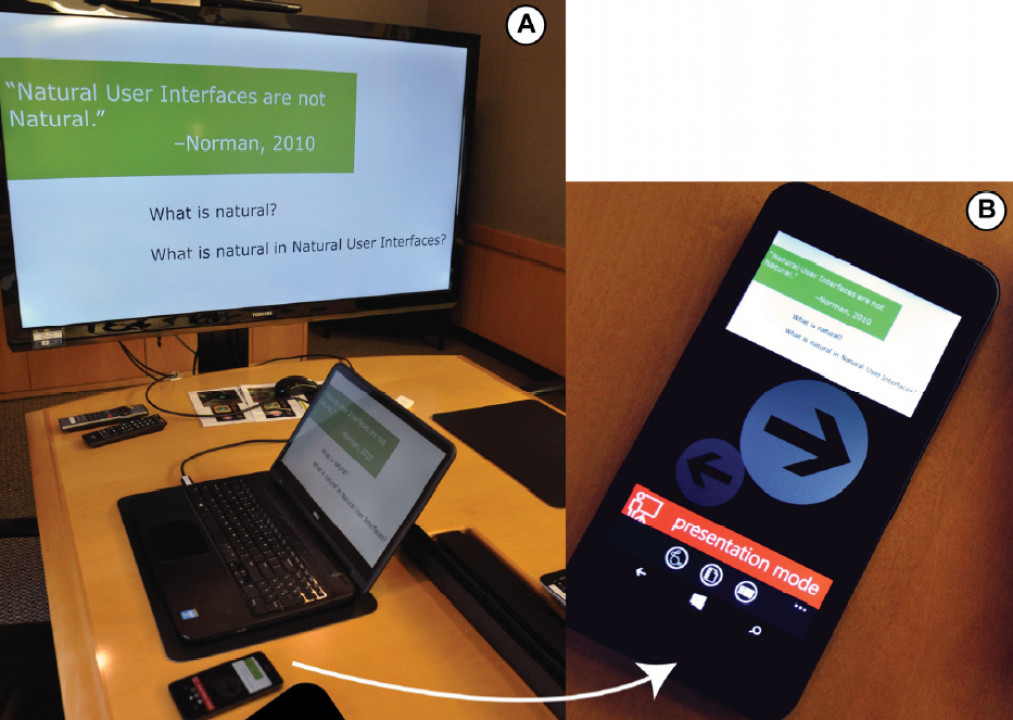|
|
||||||||||||||||||
Beyond presentation: Shared slideware control as a resource for collocated collaboration
Authors: Chattopadhyay, D., Salvadori, F., O’Hara, K,, Rintel, S.
Publication: Journal of Human-Computer Interaction, pp. 1-44 URL: http://www.tandfonline.com/doi/abs/10.1080/07370024.2017.1388170?journalCode=hhci20 Traditional models of slideware assume one presenter controls attention through slide navigation and pointing while a passive audience views the action. This paradigm limits group interactions, curtailing opportunities for attendees to use slides to participate in a collaborative discourse. However, as slideware permeates contexts beyond simple one-to-many presentations, there are growing efforts to shift the dynamics of collocated interactions. Technologies exist to shift the one-to-many information control paradigm to variations that extend functions to multiple attendees. But there is limited detailed research on how to design such multi-person attentional control and facilitate collocated interactions without disrupting existing work practices. We report on a detailed naturalistic case of using presentation in a design meeting, where participants used Office Social, an experimental slideware technology that enabled open access to shared interaction with slides across multiple devices. We explore how the design of Office Social supported informal collaboration. Our video-based analysis reveals how the orderly structures ofconversational turn-taking and bodily conduct were used in conjunction with theaffordances of the socio-technical ecosystem to organize collective activity. We suggest that supporting collocated interactions should take account of the existing conversational methods for achieving orderly collaboration rather than superimposing prescriptive technological methods of order. Keywords: Presentation interactivity; Interaction design; Audience participation; Collocated interaction; Collaboration; Open systems; Design meeting doi.org/10.1080/07370024.2017.1388170 Date: November 4, 2017 Document: View PDF |